Introduction to Rome Food Tours
Rome food tours offer an immersive way to experience the city’s culinary traditions, vibrant markets, and local specialties. These guided explorations lead participants through historic neighborhoods, bustling piazzas, and hidden trattorias, providing countless opportunities to taste authentic dishes and fine wines. The sights, aromas, and lively atmosphere create a memorable journey for food lovers and cultural enthusiasts alike.
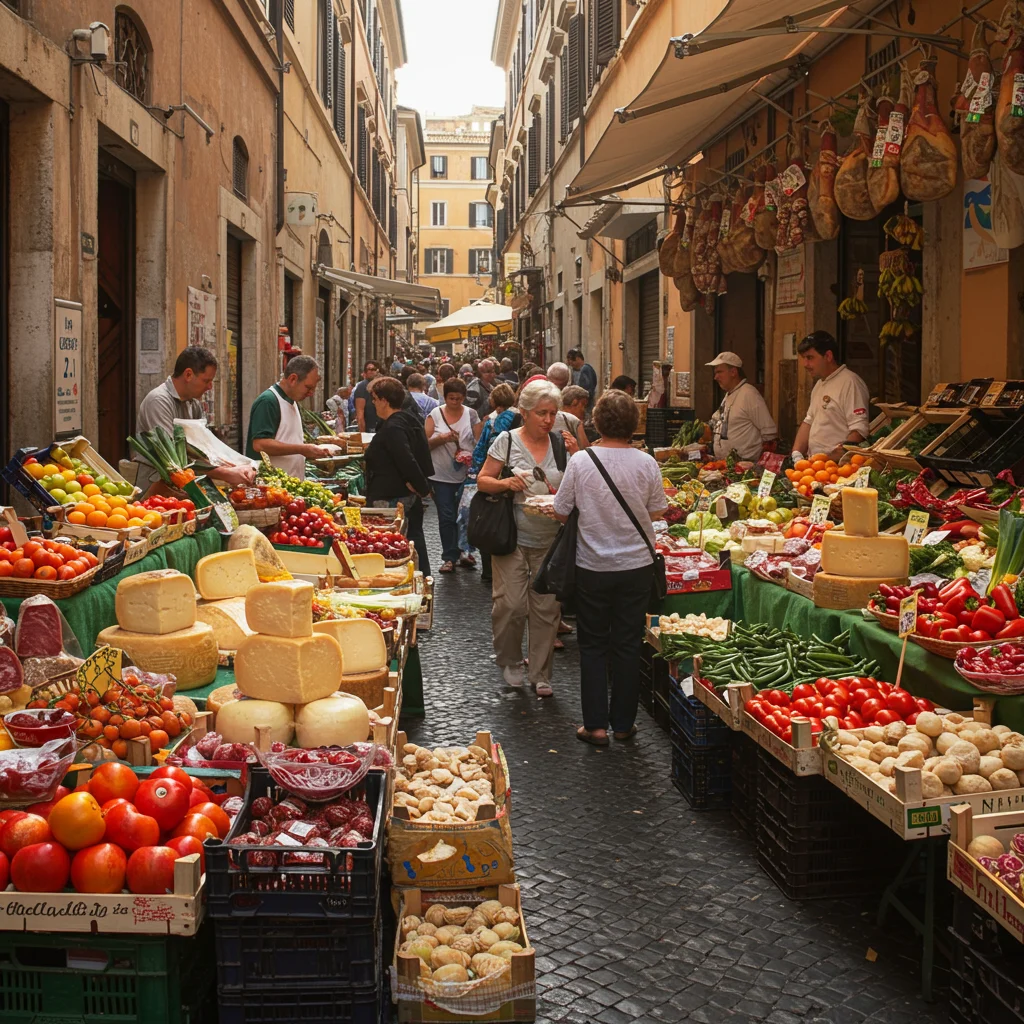
From the savory scent of freshly baked bread to the lively chatter of market vendors, every moment on a food tour in Rome engages the senses and reveals the city’s deep connection to its food heritage.
Why Take a Rome Food Tour?
Participating in a Rome food tour goes far beyond simply eating a meal. These tours provide a window into Roman life, history, and traditions through the lens of food. Whether you are a first-time visitor or seasoned traveler, a food tour offers unique access to local favorites and culinary secrets that might otherwise remain hidden.
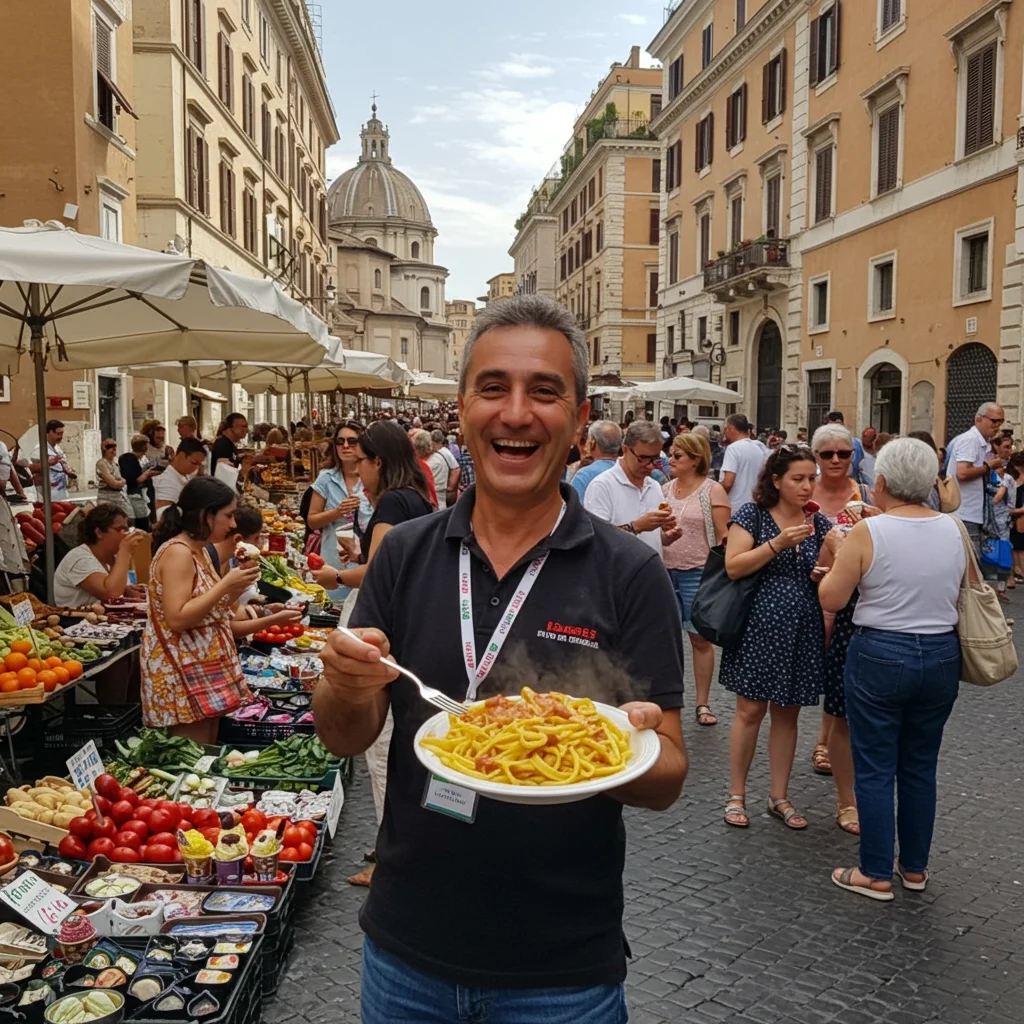
Guides share fascinating stories behind each dish and introduce travelers to passionate artisans. The combination of unlimited tastings, expertly paired wines, and behind-the-scenes insights makes every food tour a learning experience as much as a feast.
What Can You Expect from a Rome Food Tour?
On a typical Rome food tour, guests stroll through charming neighborhoods, stopping at handpicked eateries, wine bars, and markets. Each stop offers a chance to sample regional specialties, from classic pastas to street food and desserts. Knowledgeable guides offer context about ingredients, preparation methods, and the cultural significance of each dish.
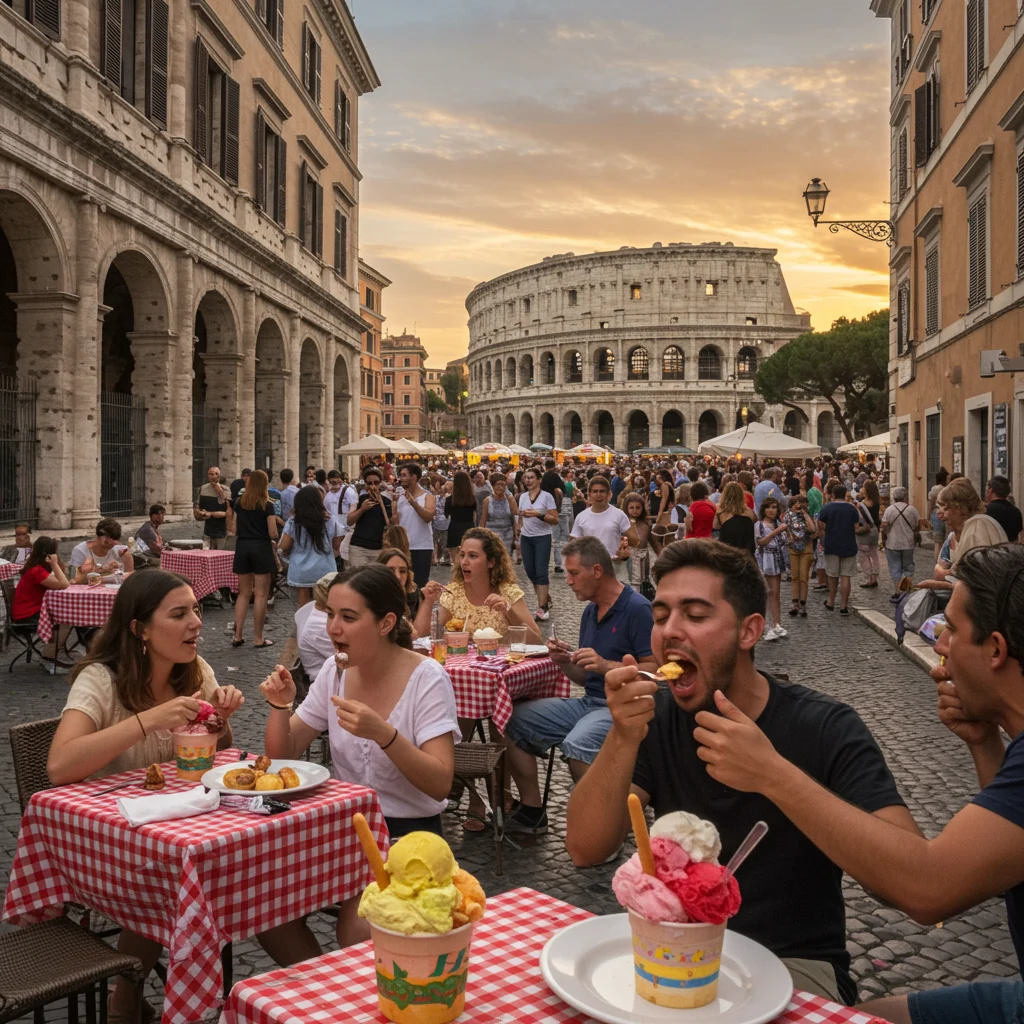
Expect a relaxed pace, plenty of interaction with local vendors, and generous portions at every stop. Most tours also accommodate dietary preferences, making them accessible to a wide range of travelers.
Types of Rome Food Tours Available
The city’s food tours cater to diverse interests, from wine connoisseurs to hands-on cooking fans. Let’s look at the main types you can choose from when planning your culinary adventure in Rome.
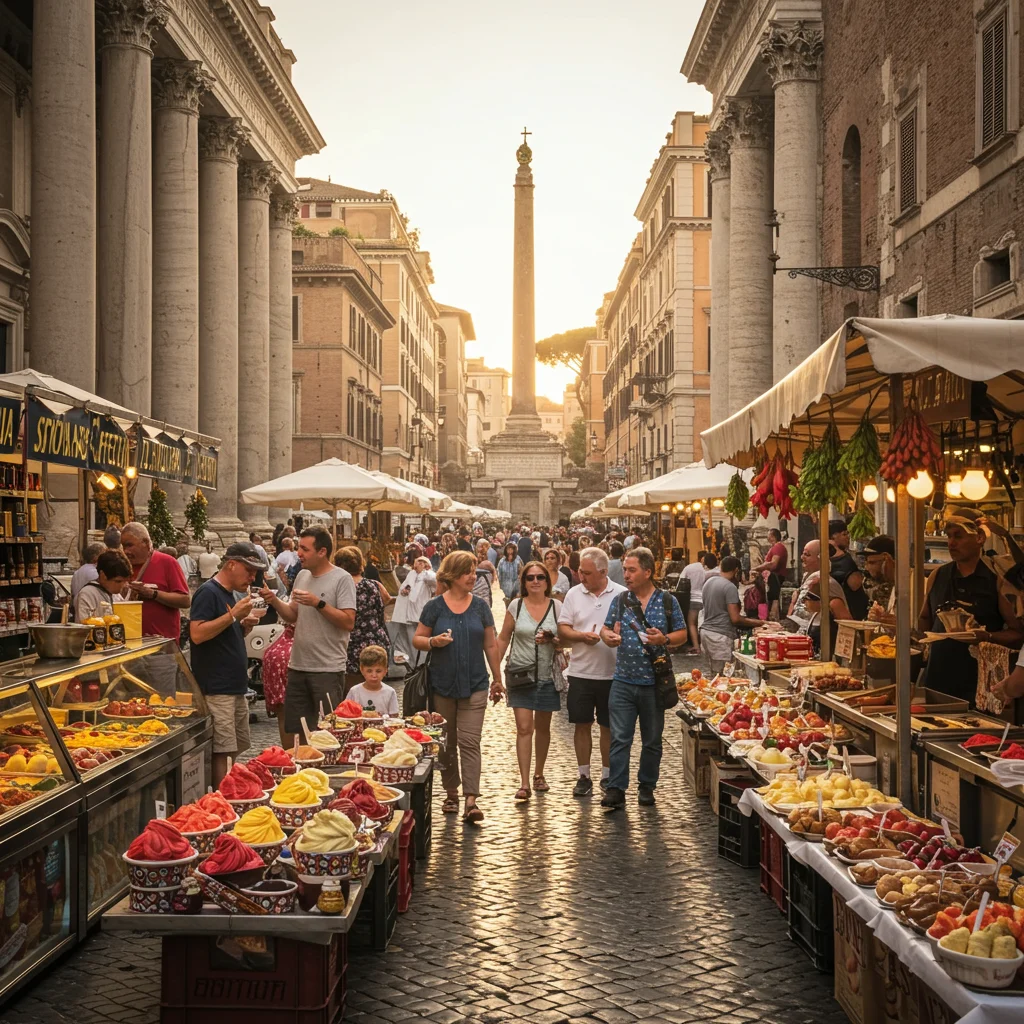
What Are Walking Food Tours Like?
Walking food tours are among the most popular options. Participants explore neighborhoods on foot, guided by experts who share stories and lead tastings at various stops. The relaxed pace allows for a deeper appreciation of both the food and the surrounding architecture, street life, and history.
How Do Wine-Focused Tours Stand Out?
For those who want to focus on Italian wines, wine-centric tours offer curated tastings at enotecas and wine bars. Professional sommeliers often lead these experiences, explaining the nuances of local varieties and showing how each wine pairs with Roman cuisine. These tours are ideal for anyone seeking to deepen their understanding of Italy’s celebrated wine culture.
What Happens on Market and Cooking Class Tours?
Some tours combine visits to bustling markets with hands-on cooking sessions. Guests shop for fresh ingredients alongside their guide, then prepare classic dishes under expert instruction. This format creates a memorable, interactive experience and leaves participants with new skills to take home. For a deeper look at these experiences, see our insights on pasta and gelato cooking classes in Rome.
Private vs. Group Tours: Which Should You Choose?
Travelers can opt for private food tours or join small groups. Private tours offer a personalized pace and can be tailored to individual tastes and interests, while group tours provide a social setting and often a lower price point. Both options include access to expert guides and generous tastings, so the choice comes down to your preferred style of exploration.
Top Neighborhoods for Rome Food Tours
Rome’s diverse districts each bring their own flavors and culinary traditions. Choosing the right neighborhood can shape your food tour experience and introduce you to new favorites.
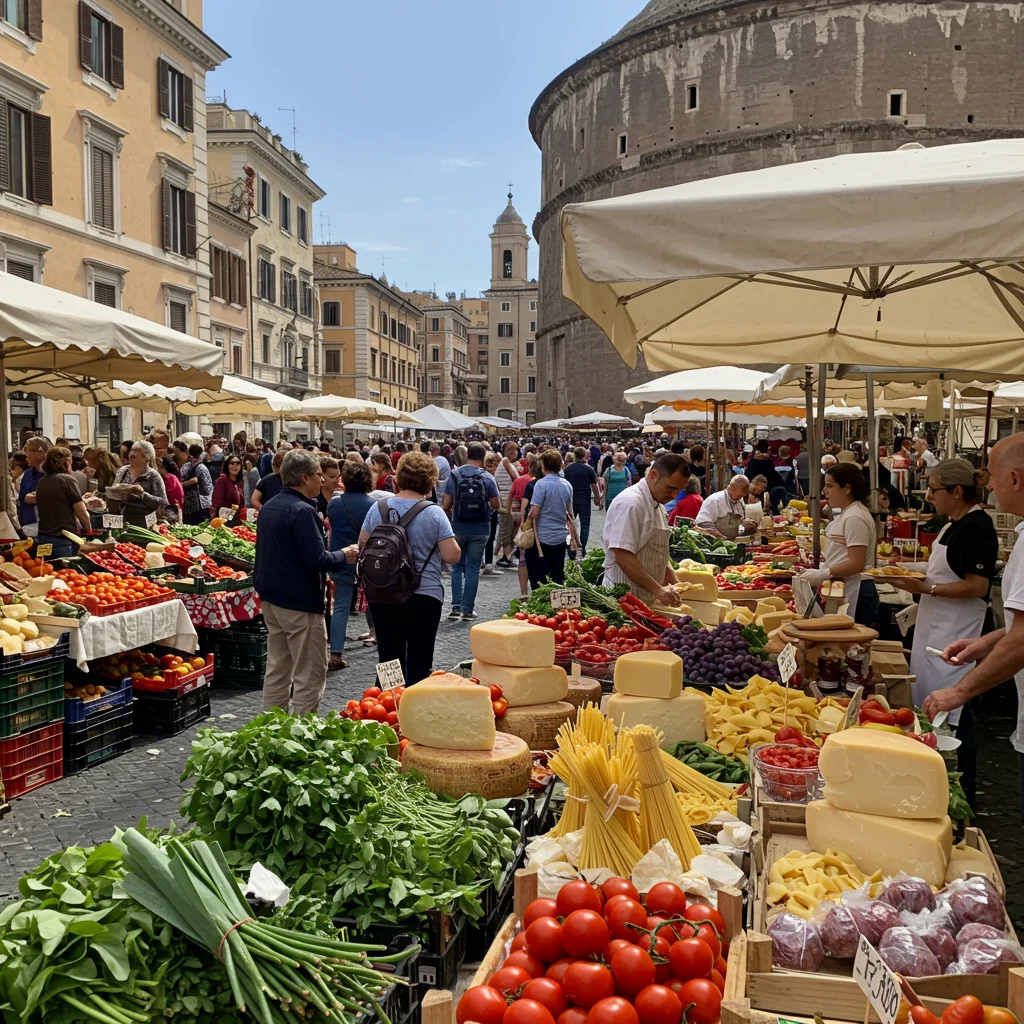
Trastevere: The Heart of Roman Cuisine
Trastevere is famous for its cobblestone streets, ivy-draped buildings, and lively trattorias. This neighborhood is often considered the soul of traditional Roman cooking, offering everything from rustic pastas to local wines served in cozy settings. The aroma of wood-fired pizza and the sound of laughter spilling from wine bars make Trastevere a feast for the senses.
Testaccio: Rome’s Culinary Soul
Testaccio has a reputation as the city’s food epicenter, thanks to its historic markets and working-class roots. Here, you’ll find beloved Roman classics such as oxtail stew, artichokes, and the famous Testaccio market, where vendors proudly display seasonal produce and regional delicacies.
Campo de’ Fiori: Markets and More
Campo de’ Fiori hosts one of Rome’s most vibrant open-air markets. In the morning, the square is filled with the colors and scents of fresh vegetables, flowers, and spices. By afternoon and evening, it transforms into a lively hub for street food, local cheeses, and casual wine tastings.
Jewish Ghetto: Unique Flavors and History
The Jewish Ghetto offers a distinctive blend of Roman and Jewish culinary traditions. Here, visitors can sample specialties such as fried artichokes and ricotta cakes, while learning about the neighborhood’s rich heritage. For a deeper exploration of this area’s food and history, we recommend our feature on the Jewish Ghetto & Navona food tour.
What Are Unlimited Tastings?
Many Rome food tours advertise “unlimited tastings,” promising guests the freedom to sample as much as they like. This approach encourages participants to try new dishes, revisit favorites, and fully experience the breadth of Roman cuisine.
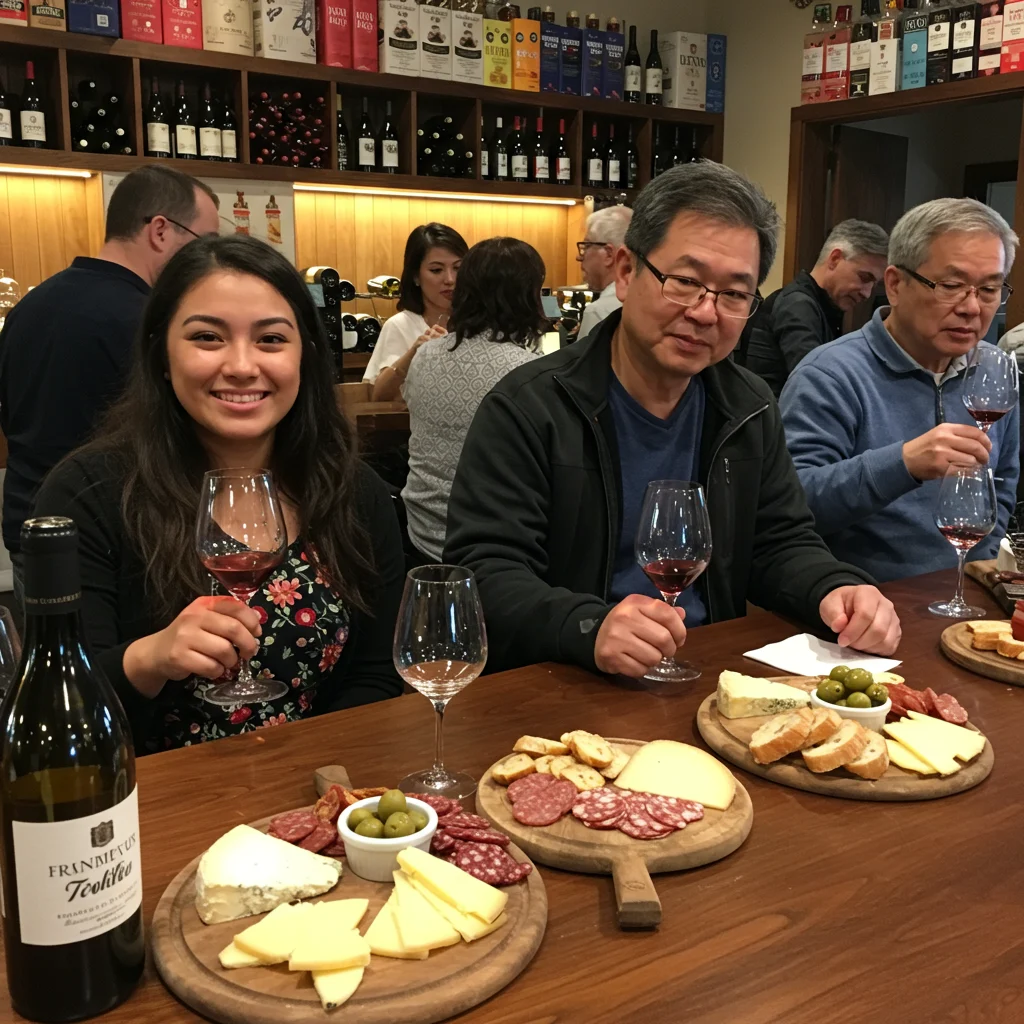
How Do Unlimited Tastings Work on Food Tours?
Typically, unlimited tastings mean that at each stop, guests can request additional servings of featured dishes within a set time frame. Guides encourage everyone to taste widely, ensuring no one leaves hungry. Some tours offer unlimited pours of house wines or allow guests to sample multiple varieties.
What Dishes Can You Sample Unlimitedly?
Depending on the tour, unlimited tastings might include:
- Classic Roman pastas, such as cacio e pepe and carbonara
- Street foods like supplì and pizza al taglio
- Regional cheeses and cured meats
- Artisanal gelato flavors
- A selection of local wines
This abundance allows guests to savor Rome’s culinary diversity and revisit dishes that capture their palate.
Is There a Catch? Understanding the Limits
While “unlimited” is generous, there are practical boundaries. Most tours limit tastings to featured items and within their scheduled timeframe. Some premium dishes or rare wines may be served in smaller portions. Open communication with your guide ensures you get the most from your experience without misunderstanding expectations.
Essential Roman Foods to Try
Rome’s culinary heritage boasts a range of iconic dishes. We recommend prioritizing these must-try foods during your tour for a truly authentic experience.

Classic Roman Pastas
Roman cuisine is renowned for its simple yet flavorful pasta dishes, each with a story rooted in local tradition.
Cacio e Pepe
Cacio e pepe is a minimalist masterpiece: just pasta, pecorino cheese, and black pepper, cooked to creamy perfection. The sharp tang of the cheese and the spicy warmth of pepper create a memorable, comforting bite.
Carbonara
Carbonara features al dente pasta coated with a silky sauce made from eggs, pecorino, guanciale, and black pepper. The aroma of sizzling pork and the richness of the sauce make this dish a perennial favorite among Romans and visitors alike.
Amatriciana
Amatriciana combines tomato sauce, guanciale, and pecorino for a dish that is both hearty and bright. The balance of savory and tangy flavors highlights the best of Roman simplicity.
Roman Street Foods
Rome’s street food scene is vibrant, offering quick bites packed with flavor and history.
Supplì
Supplì are crispy, golden rice croquettes stuffed with gooey mozzarella and sometimes ragù. The satisfying crunch and molten center make them irresistible snacks during a food tour.
Pizza al Taglio
Pizza al taglio is sold by the slice, with a pillowy crust and a variety of toppings. The aroma of baking dough and bubbling cheese draws crowds to counters across the city.
Trapizzino
Trapizzino is a modern invention: a triangular pocket of pizza dough filled with classic Roman stews and sauces. Its portable format and bold flavors have made it a local favorite.
Traditional Roman Meats and Cheeses
No food tour is complete without sampling the city’s signature meats and cheeses, often served with crusty bread and local wines.
Porchetta
Porchetta is slow-roasted, herb-stuffed pork, sliced thin and served hot or cold. The crackling skin and aromatic herbs fill the air as vendors carve generous portions for eager guests.
Pecorino Romano
Pecorino Romano cheese, with its salty, tangy flavor, is a staple in Roman cooking and a perfect accompaniment to wine or fresh fruit.
Artisanal Gelato: A Sweet Ending
No Rome food tour is complete without a stop for artisanal gelato. The creamy texture and intense flavors—ranging from pistachio to stracciatella—offer a refreshing finish on a warm Roman afternoon.
Fine Wines of Rome: What to Expect
Italian wines are an essential part of the Roman dining experience. Food tours often include generous tastings of both red and white varieties, carefully selected to complement each dish.
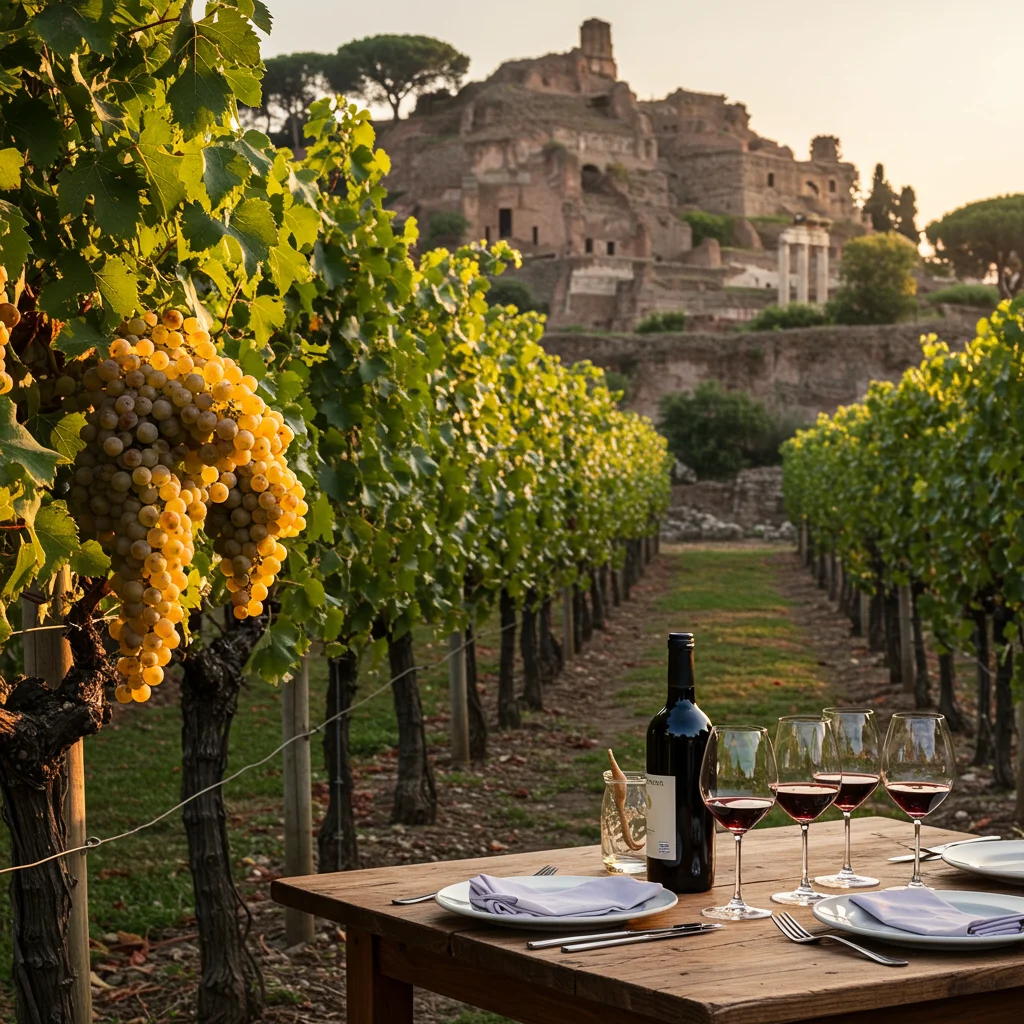
Popular Italian Wine Varieties on Tours
Rome’s proximity to renowned wine regions means that guests can sample a wide array of local vintages during their tour.
Red Wines: Montepulciano, Chianti, and More
Popular reds like Montepulciano and Chianti offer robust, fruity flavors and pair beautifully with rich Roman dishes. Other local reds may include Cesanese and Sangiovese, each with distinct notes of cherry, earth, and spice.
For those interested in expanding their wine adventures beyond Rome, consider a day trip as described in our overview of the Rome to Tuscany food and wine tour.
White Wines: Frascati, Trebbiano, and Others
Among whites, Frascati and Trebbiano stand out for their crisp, citrusy profiles. These wines are refreshing companions to lighter dishes, seafood, and cheese plates. Frascati, in particular, is a local favorite with a long history in Roman winemaking.
How Are Wines Paired with Roman Dishes?
Guides and sommeliers carefully select wine pairings to enhance the flavors of each dish. A bold red might accompany a hearty pasta, while a chilled white refreshes the palate after salty cheeses or fried snacks. The interplay between food and wine elevates the entire tasting experience.
Tips for Tasting and Appreciating Italian Wines
To fully appreciate Italian wines, we recommend:
- Observing the color and clarity in the glass
- Noting the aroma before taking a sip
- Savoring the texture and finish on the palate
- Pairing thoughtfully with local foods
As experts often say:
“Wine is the only artwork you can drink.”
Taking time to notice subtle differences and asking your guide questions can deepen your enjoyment and understanding of each pour.
How to Get the Most Out of Unlimited Tastings
Unlimited tastings are tempting, but a thoughtful approach helps you enjoy every bite and sip without discomfort.

Pacing Yourself: Avoiding Overindulgence
Start with small portions and savor each dish. It’s easy to become enthusiastic at the first stop, but remember that more treats await. Listen to your body and take breaks as needed to keep your senses sharp and your appetite engaged.
Balancing Food and Wine for Maximum Enjoyment
Alternate between food and wine, and drink water throughout the tour. This helps cleanse your palate, prevent fatigue, and allows you to appreciate subtle flavors. Sharing dishes with companions can also help you sample more without feeling too full.
Dietary Restrictions: Can You Still Enjoy a Food Tour?
Most Rome food tours can accommodate dietary restrictions with advance notice. Whether you are vegetarian, gluten-free, or have allergies, communicate your needs when booking. Guides are usually knowledgeable about ingredients and can suggest suitable alternatives.
How to Choose the Right Rome Food Tour
With so many options, selecting the perfect food tour requires a bit of research and self-reflection. Consider your priorities, interests, and any special needs before booking.
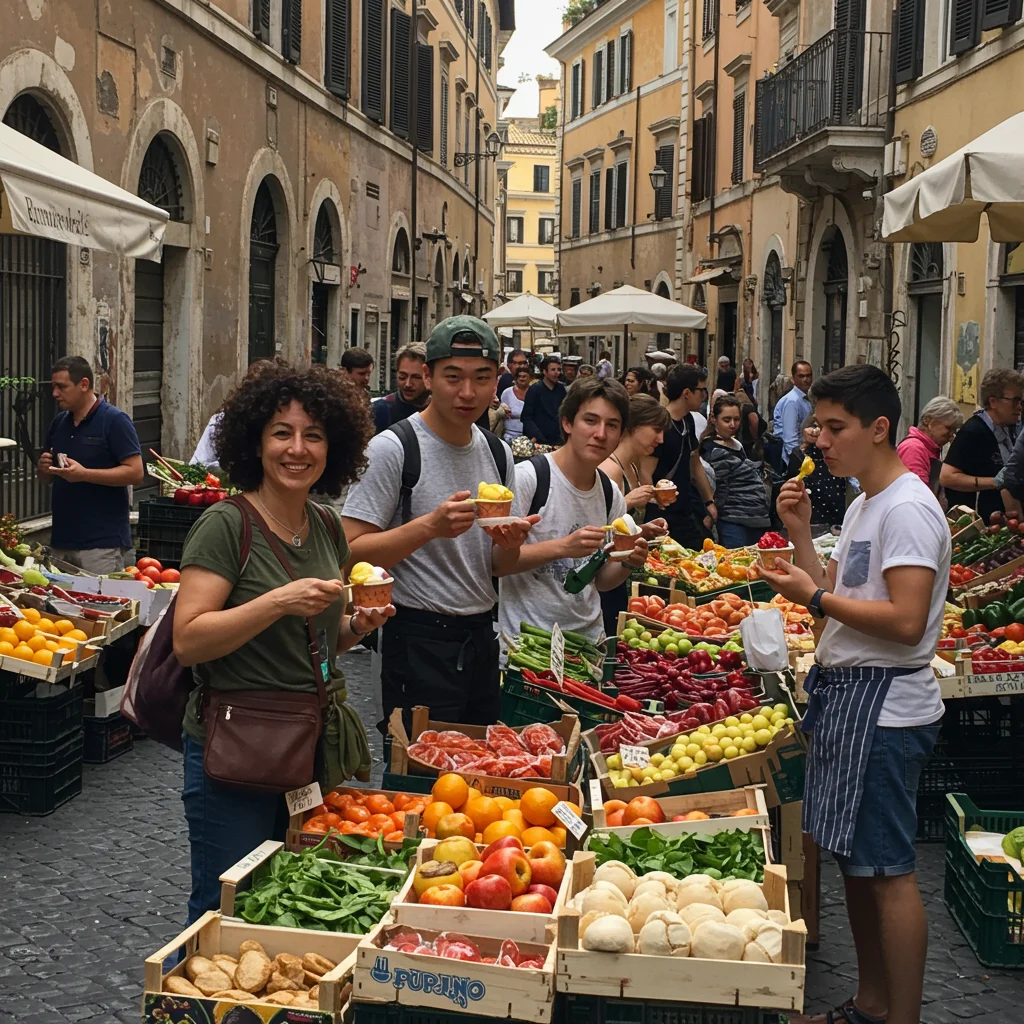
What Questions Should You Ask Before Booking?
Before reserving your spot, ask:
- What neighborhoods or markets are included?
- How many tastings are provided?
- Are wine pairings or unlimited tastings included?
- Are dietary needs accommodated?
- What is the group size?
Clear answers will help set expectations and avoid surprises.
Comparing Prices and Inclusions
Compare what each tour includes: the number of stops, type of food and wine, and whether extras like market visits or hands-on cooking are offered. Sometimes, a slightly higher price yields a much richer experience.
Reading Reviews and Recommendations
Online reviews and personal recommendations offer valuable insights into the quality of guides, tastings, and overall atmosphere. Look for recent feedback and pay attention to recurring comments about food quality, organization, and guide expertise.
Booking Tips for Peak and Off-Peak Seasons
Rome is a popular destination year-round, but food tours can fill quickly during peak travel months. Book activities early to secure your spot, and consider off-peak dates for a more intimate experience. Flexible travelers may find unique tours or last-minute deals by searching platforms like Viator.
Preparing for Your Rome Food Tour
A little preparation can help you make the most of your culinary adventure. Dress comfortably, arrive hungry, and be ready to embrace new flavors.
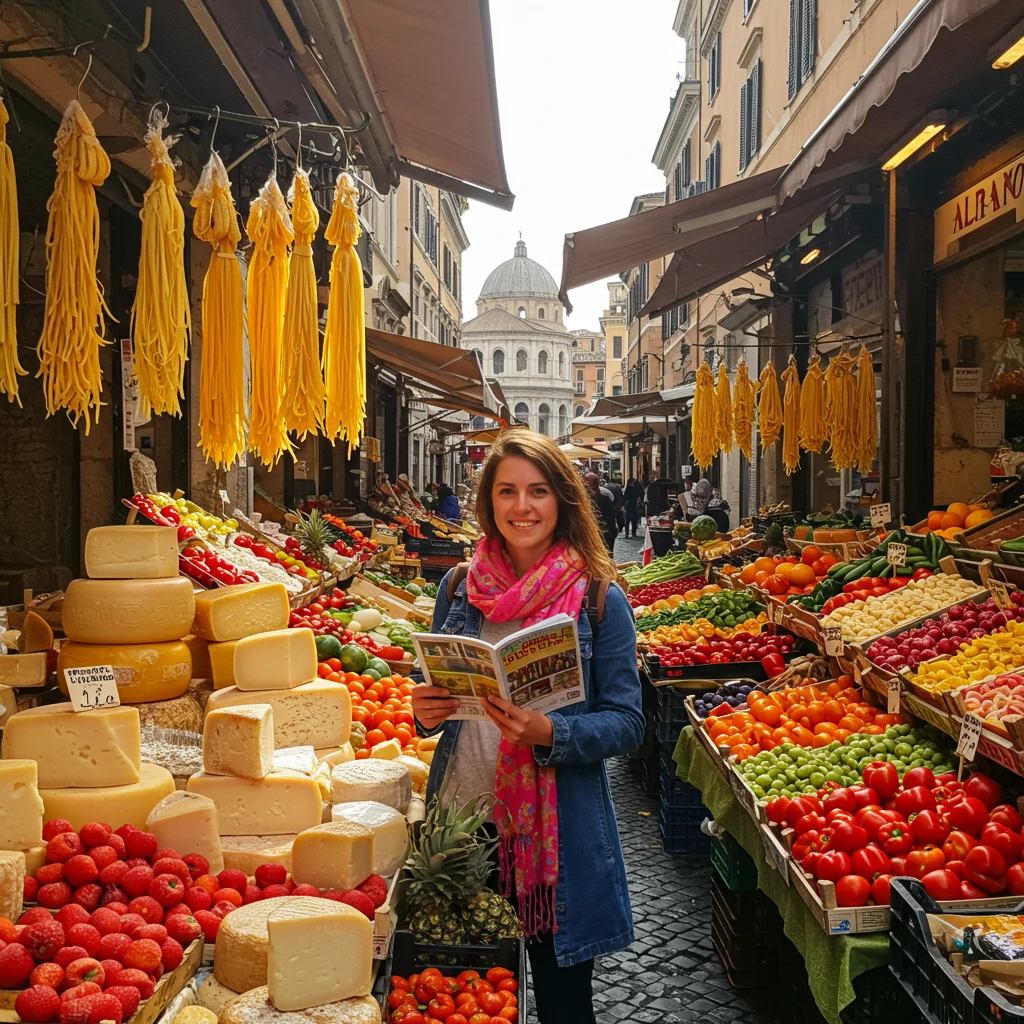
What to Wear and Bring
Comfortable walking shoes are essential, as tours often cover several neighborhoods. Dress in layers to adjust to changing weather. Bring a bottle of water, a small bag for purchases, and a camera for capturing memorable moments.
How to Prepare Your Appetite
Eat a light breakfast or snack before your tour, but don’t arrive too hungry. The pace of tastings is designed to satisfy without overwhelming, and you’ll want to savor each offering at a relaxed pace.
Meeting Points and Logistics
Double-check your tour’s meeting point and arrival time. Many tours begin at central locations or near metro stops. Arriving early allows you to meet your guide, ask questions, and get acquainted with fellow participants.
Cultural Etiquette on Rome Food Tours
Respect for local customs and traditions enriches your experience and fosters positive interactions with hosts and vendors.
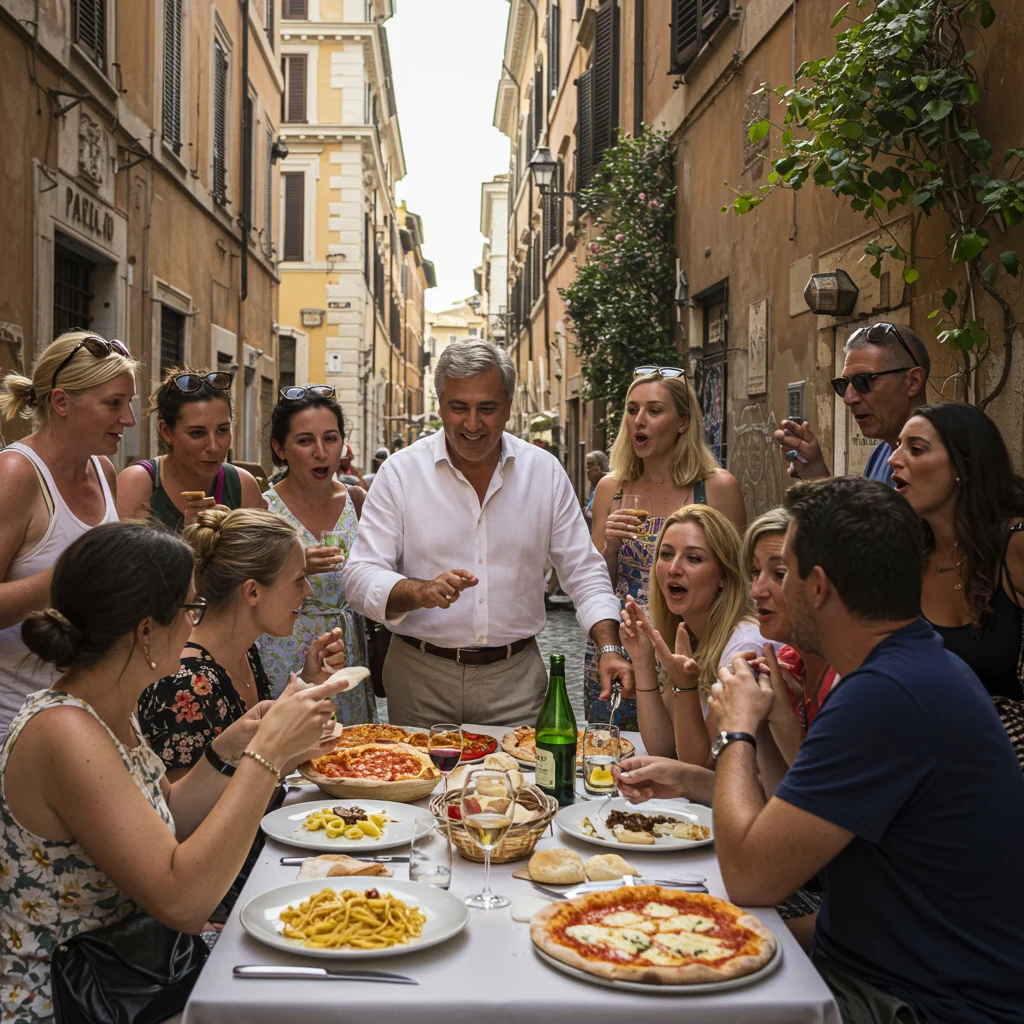
Tipping Your Guide: Should You and How Much?
While not always mandatory, tipping your guide is appreciated for excellent service. A standard tip ranges from 10–15% of the tour price. Express your gratitude personally and consider local customs regarding gratuities.
Engaging with Local Vendors Respectfully
Greet vendors with a smile and a friendly “buongiorno.” Ask questions and show genuine interest in their products. Taking time to connect adds warmth to your experience and supports small businesses.
Photography Etiquette During Tastings
Always ask before photographing vendors or their displays. Some may prefer privacy, while others enjoy sharing their craft. Respect any posted signs regarding photography and avoid blocking walkways or disturbing other guests.
Family-Friendly Rome Food Tours: What to Know
Food tours can be a delightful experience for families, offering children a fun way to learn about culture and cuisine.
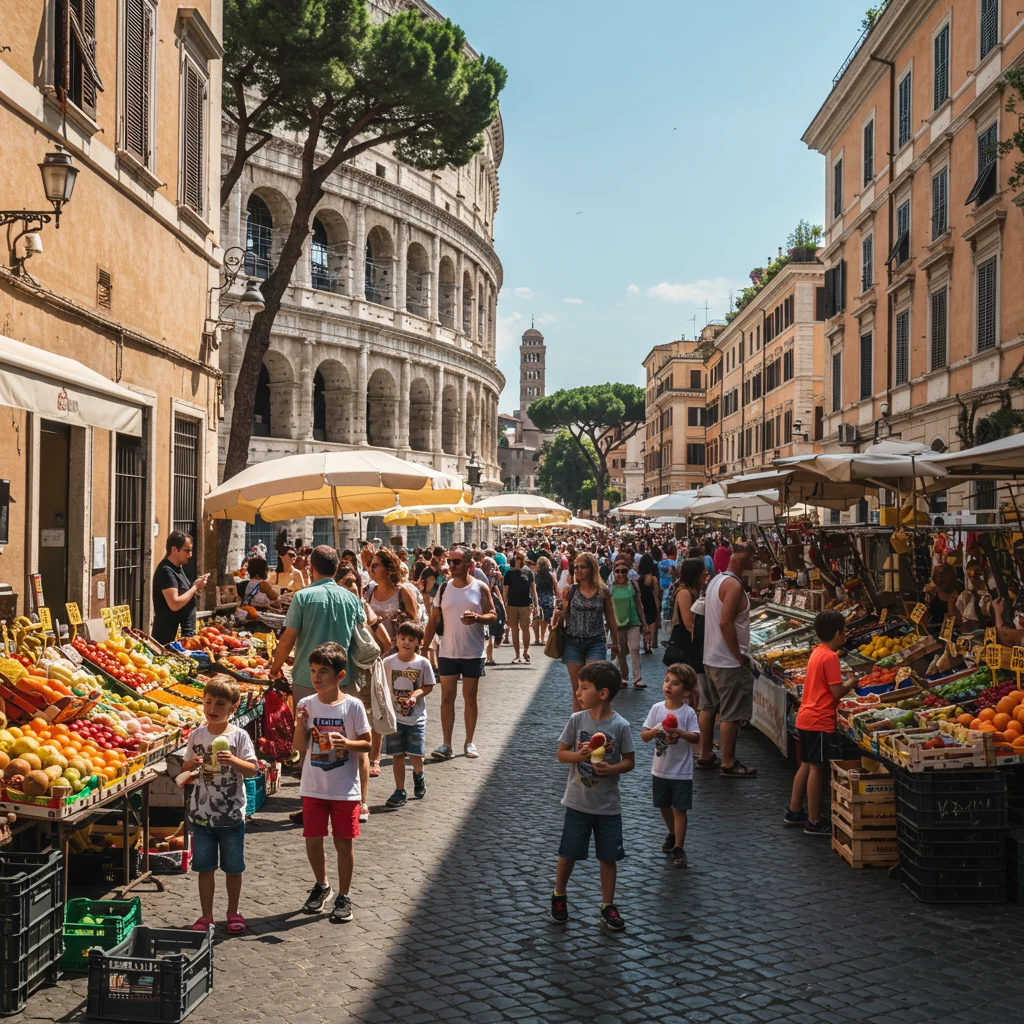
Are Food Tours Suitable for Kids?
Many tours welcome children and offer kid-friendly tastings. Look for shorter routes, interactive activities, or tours that incorporate sweets and street food. Guides are usually happy to engage younger participants and adapt explanations to suit their curiosity.
Tours with Non-Alcoholic Options
If traveling with children or non-drinkers, request non-alcoholic pairings such as juices, sodas, or traditional Italian soft drinks. Most tours are happy to accommodate these requests and can suggest memorable alternatives to wine tastings.
Accessibility Considerations for Food Tours
Rome’s historic streets and diverse menus present some challenges, but many tours strive to be inclusive for all guests.

Mobility and Dietary Needs
If you or a companion has mobility challenges, ask about walking distances, step-free access, and seating availability before booking. For dietary needs, communicate restrictions early so guides can plan appropriate tastings. Many tours are flexible and prioritize guest comfort.
Language Barriers: Will You Need Italian?
Most tours are conducted in English, and guides are accustomed to hosting international guests. Learning a few basic Italian phrases can enhance your interactions, but it is not required to enjoy the experience.
Sustainable and Responsible Food Touring
Responsible tourism supports local communities and the environment. When choosing a food tour, consider its impact and how it aligns with your values.
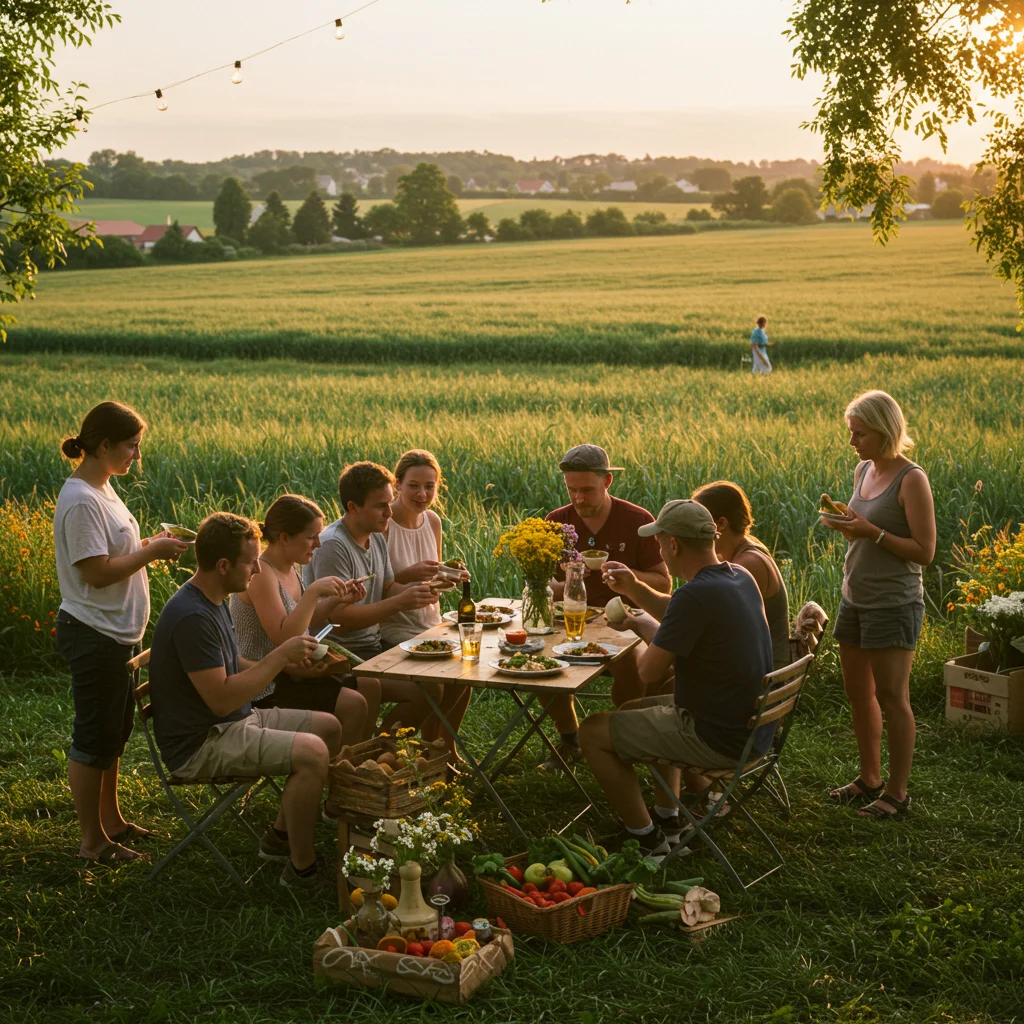
How to Support Local Producers
Opt for tours that partner with small, family-run businesses and highlight regional products. Purchasing souvenirs or ingredients directly from vendors contributes to the local economy and preserves culinary traditions. For an example of a tour that emphasizes local producers, see our review of the Frascati foodie and wine tasting evening.
Eco-Friendly Practices on Tours
Bring a reusable water bottle, avoid single-use plastics, and dispose of waste responsibly. Choose tours that minimize transportation or use eco-friendly alternatives. These small steps help protect Rome’s beauty for future generations.
Beyond the Tour: Bringing Rome’s Flavors Home
After your food tour, you may want to recreate the magic in your own kitchen or share a taste of Rome with friends and family.
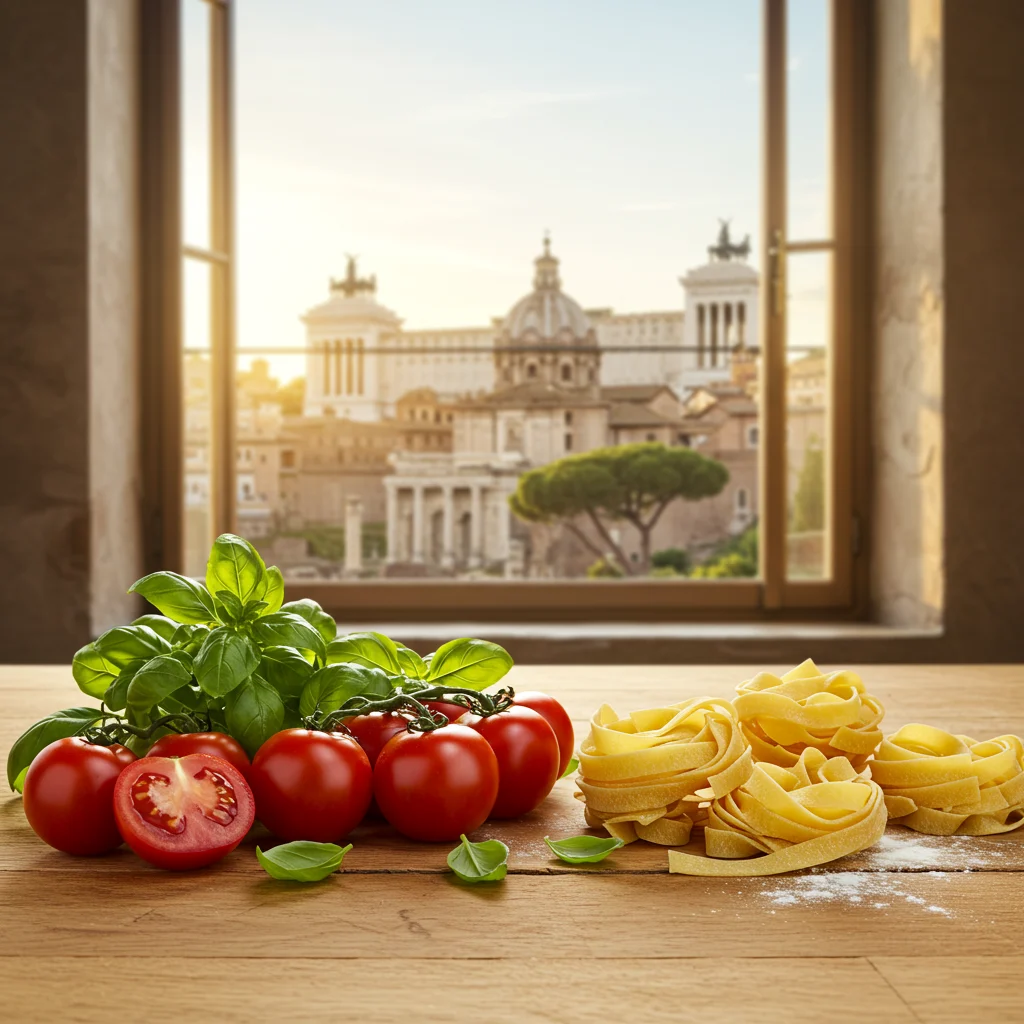
Best Food Souvenirs to Buy in Rome
Popular food souvenirs include dried pasta, aged balsamic vinegar, olive oil, and jars of Roman artichokes. Cheeses like pecorino and cured meats make excellent gifts if properly packed for travel.
Recipes to Try After Your Tour
Many tours share recipes or offer cooking classes as part of their experience. Bringing home a recipe for carbonara or tiramisu allows you to relive your Roman adventure. For inspiration, read our insights on Rome’s ultimate pasta and tiramisu cooking class.
Frequently Asked Questions About Rome Food Tours
Below are quick answers to some common queries about Rome food tours and wine tastings.

How Much Do Rome Food Tours Cost?
Prices vary based on tour length, inclusions, and group size. Expect to pay between €50–€120 per person for a quality experience with unlimited tastings and wine pairings.
Are Reservations Required?
Reservations are highly recommended, especially during busy travel seasons. Booking in advance secures your spot and allows guides to prepare for any dietary needs.
What Happens in Case of Bad Weather?
Most tours run rain or shine, but severe weather may prompt rescheduling or refunds. Check the cancellation policy and dress appropriately for the forecast.
How to Book on Viator
Booking a Rome food tour is simple through trusted platforms like Viator. Browse available tours, read detailed descriptions, and compare prices and inclusions. Once you’ve chosen your preferred experience, follow the secure checkout process and receive instant confirmation by email.
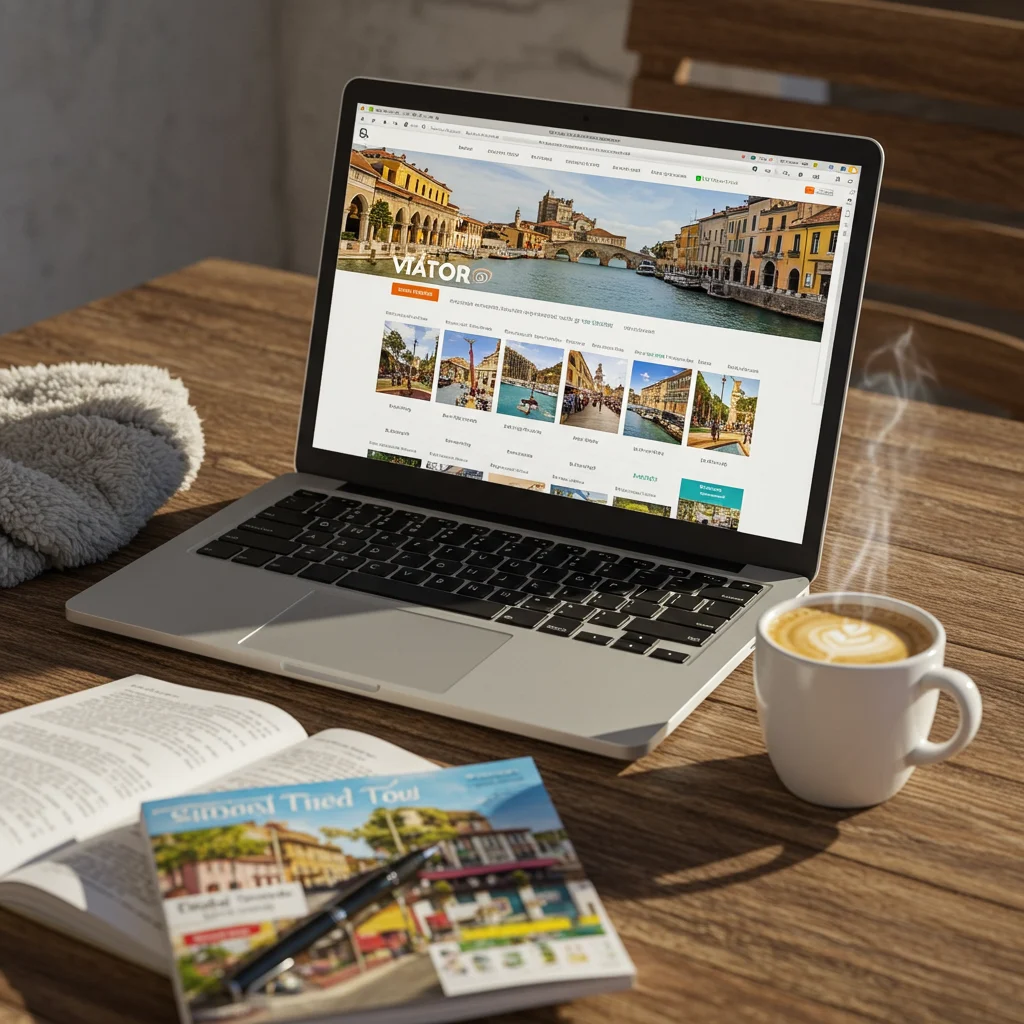
We recommend using Viator to find tours that match your interests, whether you’re seeking unlimited tastings, wine pairings, or hands-on cooking classes. Their platform makes it easy to plan your trip and make adjustments as needed.
Conclusion: Savoring the Best of Rome Through Food and Wine
Rome food tours invite us to taste history, culture, and tradition in every bite. From the first sip of local wine to the final spoonful of gelato, each moment offers new flavors to remember and stories to share. By choosing carefully, preparing thoughtfully, and embracing the city’s warm hospitality, we create lasting memories and a deeper connection to Roman life. For more inspiration and expert travel tips, visit Izase.
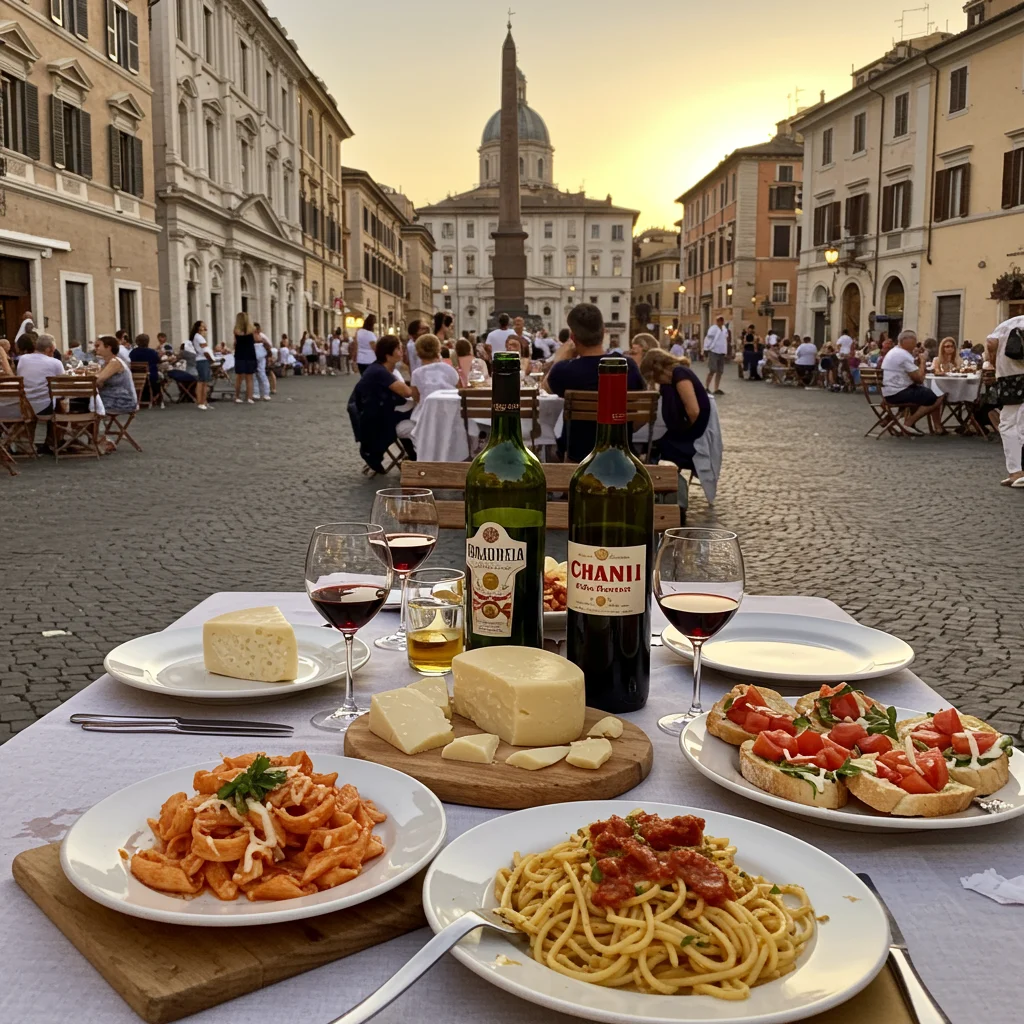
Final Tips for an Unforgettable Rome Food Tour Experience
To make the most of your Rome food tour, arrive with curiosity, an open mind, and a hearty appetite. Engage with your guide, savor each tasting, and respect the traditions that make Roman cuisine so special. Whether you travel solo, with friends, or with family, let the city’s flavors guide your journey and enrich your understanding of its culture.

Disclaimer: This information is accurate to the best of our knowledge; however, there may be changes or mistakes. Please verify exact details on the Viator booking page.


